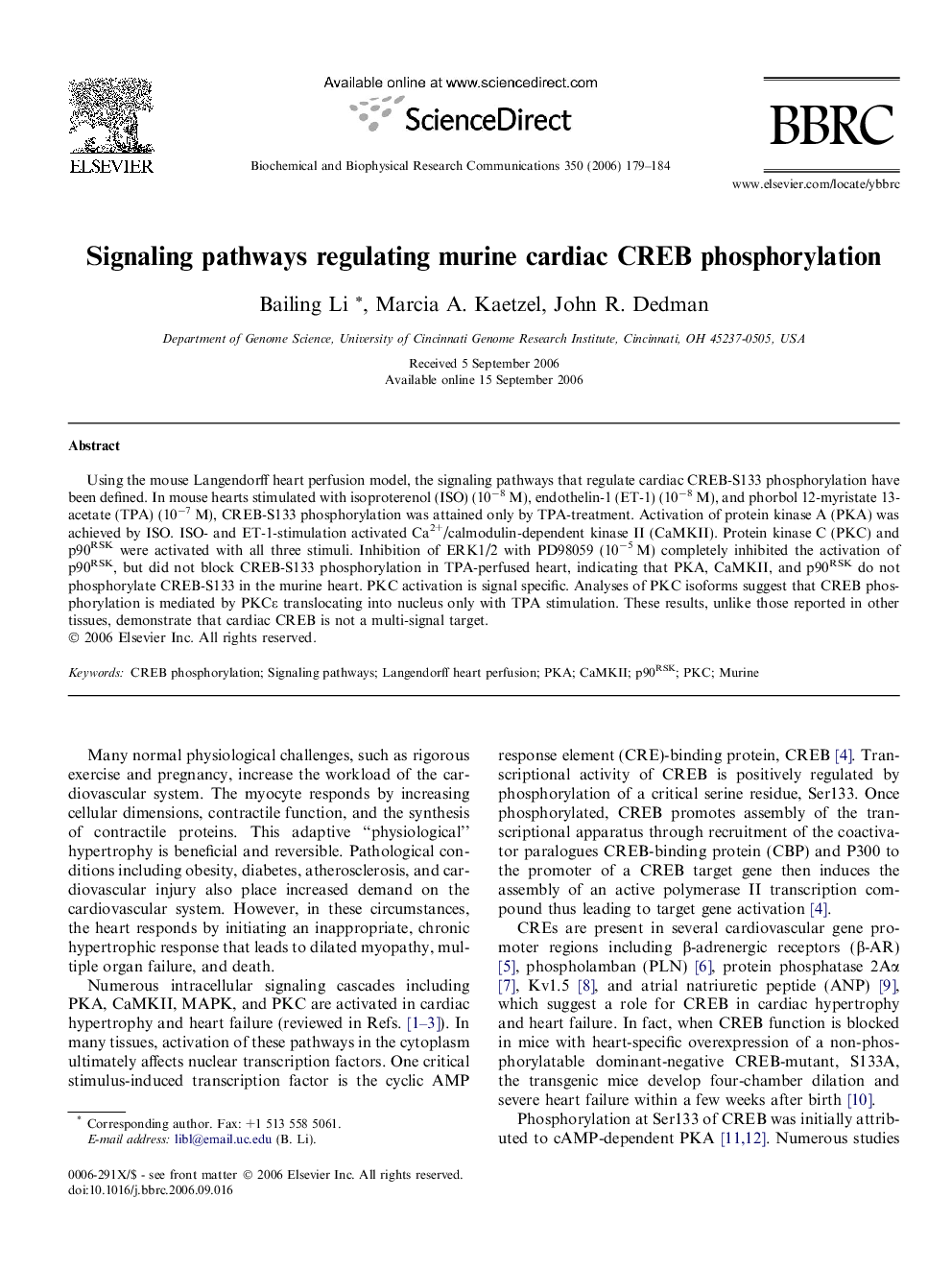| Article ID | Journal | Published Year | Pages | File Type |
|---|---|---|---|---|
| 1938810 | Biochemical and Biophysical Research Communications | 2006 | 6 Pages |
Abstract
Using the mouse Langendorff heart perfusion model, the signaling pathways that regulate cardiac CREB-S133 phosphorylation have been defined. In mouse hearts stimulated with isoproterenol (ISO) (10â8 M), endothelin-1 (ET-1) (10â8 M), and phorbol 12-myristate 13-acetate (TPA) (10â7 M), CREB-S133 phosphorylation was attained only by TPA-treatment. Activation of protein kinase A (PKA) was achieved by ISO. ISO- and ET-1-stimulation activated Ca2+/calmodulin-dependent kinase II (CaMKII). Protein kinase C (PKC) and p90RSK were activated with all three stimuli. Inhibition of ERK1/2 with PD98059 (10â5 M) completely inhibited the activation of p90RSK, but did not block CREB-S133 phosphorylation in TPA-perfused heart, indicating that PKA, CaMKII, and p90RSK do not phosphorylate CREB-S133 in the murine heart. PKC activation is signal specific. Analyses of PKC isoforms suggest that CREB phosphorylation is mediated by PKCε translocating into nucleus only with TPA stimulation. These results, unlike those reported in other tissues, demonstrate that cardiac CREB is not a multi-signal target.
Related Topics
Life Sciences
Biochemistry, Genetics and Molecular Biology
Biochemistry
Authors
Bailing Li, Marcia A. Kaetzel, John R. Dedman,
